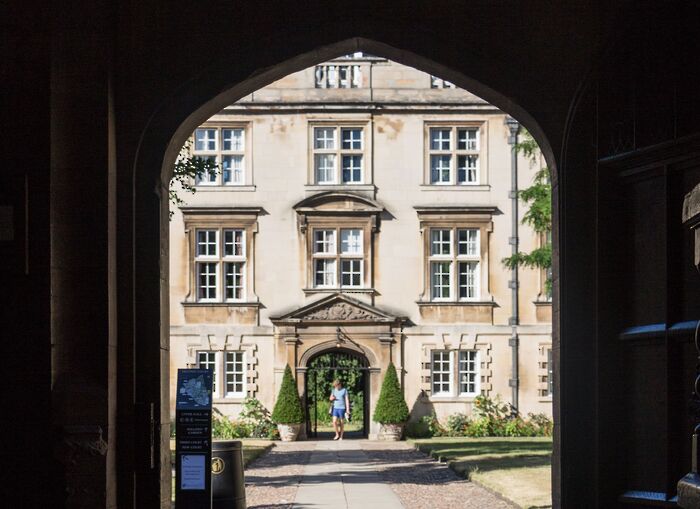Clare and Homerton perform worst in CUSU’s Living Wage league table
The Taylor’s Table compiled by student campaigners ranks colleges based on how they paid their workers in July 2019.

The Taylor's Table, released today at the beginning of Living Wage week, found that only 8 of the 31 colleges paid all their staff the Real Living Wage in July 2019.
The worst offenders, Clare and Homerton, both ranked at the top of the league table, with both paying more than 12% of their staff less than the previous Real Living Wage of £9.00 per hour.
Both colleges paid only £7.70 per hour to their lowest-paid workers.
Although Clare and Homerton ranked highest in the table, Churchill had the lowest minimum wage of £7.05 per hour and paid 11.25% of its staff below the £9.00 per hour. At Gonville and Caius, two in five employees were paid below the Real Living Wage, which is the highest out of any college and corresponds to 83 members of staff.
The Cambridge University Living Wage Campaign commented, “Failing to pay the Cambridge Living Wage, the minimum wage needed to cover the cost of living in Cambridge, is nothing short of exploitation.”
“Colleges are enormously rich institutions... They have a duty to their staff, without whom they would not be able to operate, to provide fair pay, fair working conditions and fair representation.”
On the opposite end of the table, eight colleges paid all their workers above the living wage. These colleges were Selwyn, Queens’, St. John’s, King’s, Murrag Edwards, Jesus, Girton, and Trinity.
Trinity College had the highest wage paid to their lowest paid workers, at £9.27 per hour.
The data from the table is only representative as of July 14th 2019, because of the time taken for colleges to reply to FOI requests on which the table is based.
Since then, colleges have had their annual pay reviews and many have made revisions to their pay scales. A spokesperson for Clare told Varsity that a recent annual increase in staff salaries means that “all permanent staff now receive £9.00 or more”. A spokesperson for Churchill also commented that “with effect from April our lowest scale point for employees will be equivalent to £9.50 per hour.”
The Bursar of Homerton told Varsity, “It is College policy to pay all permanent and temporary employees at least the Real Living Wage. In addition all our staff enjoy a free meal when on duty, free parking, free uniforms where applicable and a heavily subsidised gym."
“All our permanent staff can also join a defined contribution scheme pension to which the College contributes 18.2% of the salary.”
The Taylor's Table, however, does not solely include employees with an employment contract, but also workers who tend to have more casual work.

Clare’s Bursar also explained, “There are 47 students who work in the student-run Bar, who are paid less than £9.00. However, their wages are set by the students themselves and they also receive additional benefits.”
The Taylor's Table is a league table released by CUSU Ethical Affairs Campaign and the Cambridge Living Wage Campaign. The aim is to “highlight the poor treatment of workers by Cambridge Colleges and push for accreditation with the Living Wage Foundation.”
The table ranks colleges based on three criteria: the lowest hourly wage paid to workers, the number of staff paid below £9.00 per hour and the percentage of staff paid below £9.00 per hour. Each college is given points based on a weighted average of these three rankings, to calculate the final league table.
The release of this most recent Taylor's Table coincides with annual living wage week, during which new Living Wage rates are announced. Today, the Living Wage for 2019/2020 was set at £9.30, an increase from £9 in 2018/2019 and £8.75 in 2017/2018.
There is a lack of data available for Robinson and Magdalene, who both refused to publish data under Section 43(2) of the Freedom of Information (FOI) Act, which gives exemption if the information might affect commercial interests.
In the previous Taylor's Table, released in February, Robinson was found to be the worst college, followed by Clare and Magdalene. The Living Wage Campaign said they “condemn the decision of Robinson and Magdelene to obscure information on staff working conditions and call on them to release the data. The lack of transparency and accountability no doubt contribute to a system of exploitation in their College grounds.”
However, some improvements have been made since then. On the 15th August 2018, there were 996 workers employed by Cambridge colleges, who were paid below the Real Living Wage (which was £8.75 at the time). According to the new figures, this number has reduced to 795 college staff not earning the living wage.
Commenting on the table's release, CUSU President, Edward Parker Humphreys said, “In a city as expensive as Cambridge, where living costs are far higher than the national average, paying a real Living Wage should be the bare minimum for such wealthy institutions.”
Last year, Cambridge was named the most unequal city in the UK.
 News / Caius mourns its tree-mendous loss23 December 2025
News / Caius mourns its tree-mendous loss23 December 2025 News / Clare Hall spent over £500k opposing busway 24 December 2025
News / Clare Hall spent over £500k opposing busway 24 December 2025 Comment / The ‘class’ of Cambridge24 December 2025
Comment / The ‘class’ of Cambridge24 December 2025 Comment / Yes, I’m brown – but I have more important things to say22 December 2025
Comment / Yes, I’m brown – but I have more important things to say22 December 2025 Interviews / Politics, your own way: Tilly Middlehurst on speaking out21 December 2025
Interviews / Politics, your own way: Tilly Middlehurst on speaking out21 December 2025








